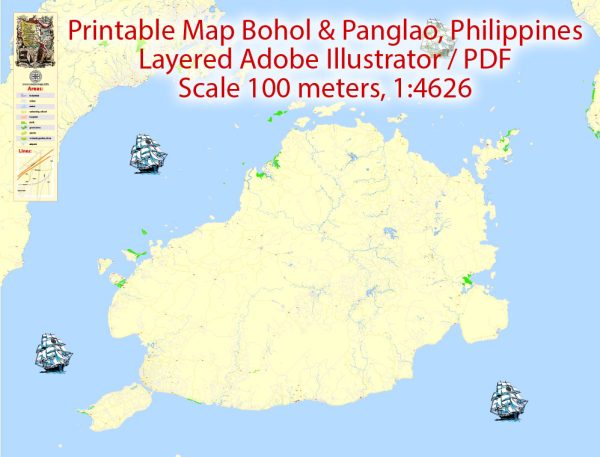Bohol, including the island of Panglao, is one of the Philippines’ most historically and culturally rich regions. Its urban development has evolved over the centuries, shaped by various influences and events. Here is a brief history of urban development in Bohol and Panglao:
- Pre-Spanish Period:
- Prior to Spanish colonization, the indigenous people of Bohol, such as the Boholanos and the Eskaya, lived in small coastal communities and practiced agriculture, fishing, and trade.
- Panglao Island was likely inhabited by the same indigenous groups, who had their settlements along the coast and relied on the bounties of the sea for their livelihood.
- Spanish Colonial Period (16th to 19th centuries):
- Spanish colonizers arrived in the Philippines in the 16th century and established Catholic missions throughout the archipelago.
- The Spanish influence in Bohol led to the construction of churches and forts, with the most famous being the Baclayon Church and the Loboc Church.
- Spanish-style urban planning introduced the concept of a central plaza, around which important government and religious buildings were constructed, shaping the urban layout of many towns in Bohol.
- American Colonial Period (20th century):
- The United States took control of the Philippines in 1898 after the Spanish-American War, and Bohol was placed under American colonial rule.
- During this period, urban development continued with the introduction of modern infrastructure, roads, and schools.
- World War II and Post-War Period:
- World War II had a significant impact on the Philippines, including Bohol, which experienced destruction and hardship during the Japanese occupation.
- After the war, efforts were made to rebuild and modernize urban areas.
- Independence and Contemporary Period:
- The Philippines gained independence from the United States in 1946.
- Bohol and Panglao continued to develop, with urbanization expanding along with economic growth, infrastructure development, and tourism.
- Tourism Development:
- In the latter half of the 20th century and into the 21st century, Bohol and Panglao Island have experienced a boom in tourism.
- The development of modern resorts, hotels, and amenities, particularly in Panglao, has transformed the island into a popular tourist destination.
- Infrastructure improvements, including a new airport, have facilitated easier access to the area.
The history of urban development in Bohol and Panglao reflects the region’s evolution from pre-colonial indigenous settlements to the Spanish colonial legacy, American colonial influence, and modern development spurred by tourism. Today, these areas continue to blend their rich cultural heritage with the demands of a growing tourism industry.


 Author: Kirill Shrayber, Ph.D.
Author: Kirill Shrayber, Ph.D.